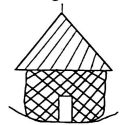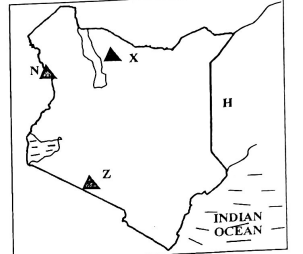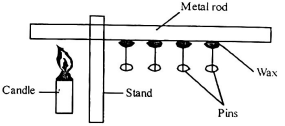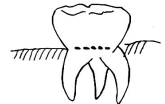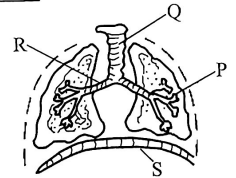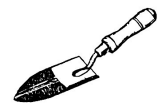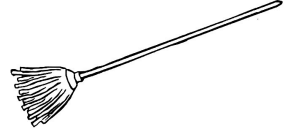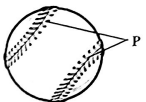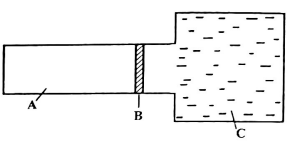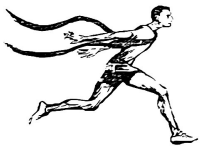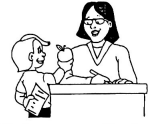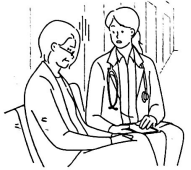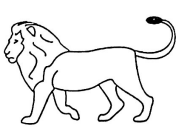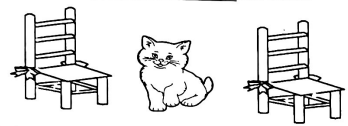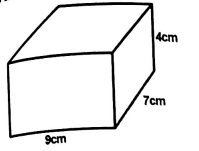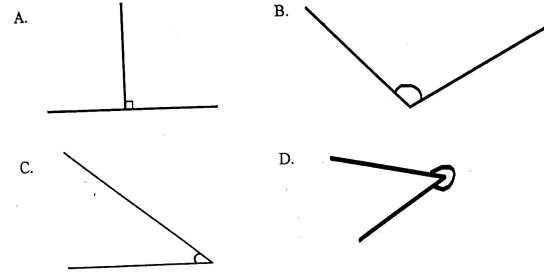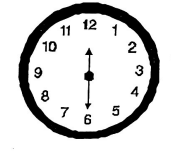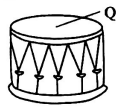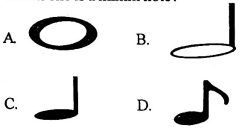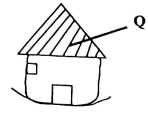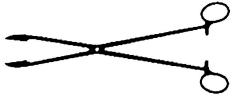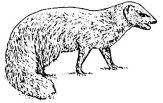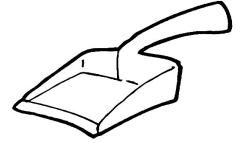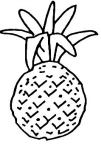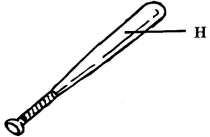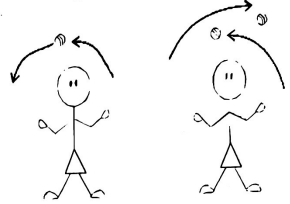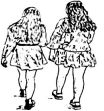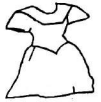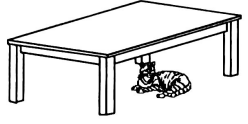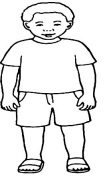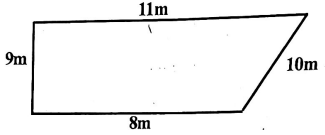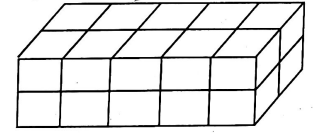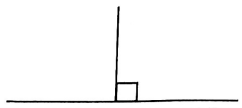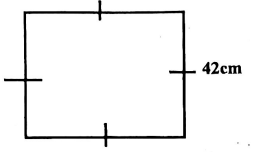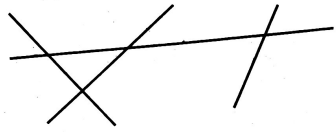Stella
Creative Arts and Social Studies Questions and Answers - Grade 5 Mid Term 3 Exam 2023 Set 1
A. ART AND CRAFT
- The following materials are used in drawing except ?
- Pencil
- Drawing book
- Eraser
- A pair of scissors
- Which one of the following is NOT a primary colour?
- Yellow
- Green
- Blue
- Red
- Which technique is used to create value in the drawing below?
- Collage
- Cross hatching
- Montage
- Crayon etching
- The following are elements of Art except?
- Texture
- Value
- Shape
- Shade
- Grade five learners collected some materials and stuck them on a surface to create a new picture. The technique is known as __________________
- Sticking
- Collage
- Creation
- Montage
- A baby cot is made using the technique called
- Modelling
- Carving
- Kneading
- Weaving
- We use _____________________to make crayons.
- Paraffin wax
- Warm water
- Sand
- Glue
- Tom wants to divide a drawing into two equal parts to create balance. Which line will he use?
- zig zag line
- Curved line
- Axis line
- Straight line
- Grade five Art and Craft teacher asked his learners to make an illustration that show colours relate to each other. This technique is called ________________________
- Mosaic
- Photocopy
- Colouration
- Colour wheel
- A book jacket is removable cover made of paper. Which information is NOT found in a book jacket?
- The author of the book
- The illustrations or pictures
- The title of the book
- The price of the book
B. MUSIC
- The songs sung by people of a certain community about the people ways of life is called?
- Folk songs
- Sacred songs
- Patriotic songs
- Topical songs
- Identify the traditional musical instrument below.
- Nzumari
- Bung'o
- Chivoti
- Mulele
- Which one of the following is NOT part of a descant recorder?
- Head joint
- Foot joint
- Middle joint
- Top joint
- The East Africa National Anthem is NOT sung in ____________________________________
- South Sudan
- Ethiopia
- Uganda
- Tanzania
- What is the French rhythm for the note below?
- Taa
- Taa - aa
- aa aa aa aa
- A two girls performance can be described as
- Solo
- Trio
- Choral
- Duet
- What is tempo as used in Music?
- highness or lowness of sound
- speed of sound
- shape of sound
- rhythm of sound
- Grade five learners were told by the Music teacher to organise for a dance. Which one don't they need?
- Ornaments
- Adornments
- Costumes
- Camera
- A drum as a musical instrument is made from
- Leather and Metal
- Leather and Canvas
- Leather and wood
- Wood and polythene
- The quality of voice is known as ________________________________________
- Tone
- Charcoal
- Diction
- Gesture
C. SOCIAL STUDIES
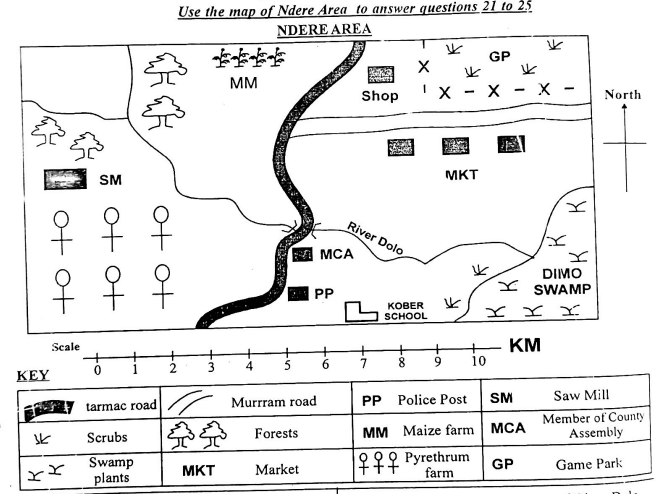
- What is the direction of Dimo swamp from the saw mill?
- South West
- South East
- North West
- North East
- The following are sections of River Dolo. Which one is NOT?
- Delta
- Confluence
- Estuary
- Tributaries
- People of Ndere Area are mainly ____________________________
- Christians
- Muslims
- Pagans
- Traditionalists
- Which economic activity is NOT carried out in Ndere Area?
- Tourism
- Trading
- Lumbering
- Fishing
- Ndere Area is likely to be a ___________________________
- Ward
- Location
- Constituency
- County
- Which of the following is NOT a Nilote?
- Rendile
- Turkana
- Luo
- Kipsigis
- Diatomite as a mineral mined in Kenya is mine at ____________________________
- Kimwarer
- Kariandusi
- Lake Magadi
- Bamburi
- Growing of crops and rearing of livestock is called __________________________________
- Arable farming
- Livestock farming
- Subsistence farming
- Mixed farming
- Which crop is NOT a horticultural crop?
- Cotton
- Carnations
- Grapes
- French beans
- Which country borders Kenya to the South West?
- South Sudan
- Somalia
- Tanzania
- Eritrea
- Below are characteristics of a certaini climate region
- Has one rain season
- High temperatures
- Rainfall is about 1000mm per year
The above climate region is_________________- Semi desert
- Tropical
- Modified tropical
- Equatorial
- The original homeland of the Cushites is;-
- Horn of Africa
- Congo forest
- South Sudan
- South Africa
- The interdepence of language groups in Kenya has the follwing benefits. Which one is false?
- Promotes peace
- Helps fight triabalism
- Encourages corruption
- Promotes unity
- The hotness or coldness of a place is called?
- Thermometer
- Air pressure
- Wind
- Temperature
Use the map of Kenya below to answer questions 35-38
- What is the capital city of the country marked H?
- Mogadishu
- Khartoum
- Juba
- Dodoma
- Which hills are represented by Z:-
- Loita Hills
- Chulu Hills
- Taita Hills
- Shimba Hills
- The Historic built environment marked X is likely to be _________________________________
- Fort Jesus
- Gedi Ruins
- Olorgesaille
- Koobi Fora
- What is the height of Mountain marked N?
- 5099m
- 4890m
- 4321m
- 5895m
- Which one of the following members is a Secretary during the school board management meetings in a school?
- The School Chairman
- The Head teacher
- The Deputy Headteacher
- The County Governor
- Which of the following skills was NOT taught through apprenticeship?
- Iron work
- Medicine
- Harvesting Honey
- Cooking food
D. CHRISTIAN RELIGIOUS EDUCATION
- Which book of the Bible tells us that God has good plans for our future?
- Genesis 2:5
- Jeremiah 29: 11
- John 3:16
- Mathew 25: 14
- King Solomon was able to solve problems involving his people because of his ___________________________
- power
- strength
- courage
- wisdom
- Which one of the following is NOT a value taught by the John the Baptist?
- Caring
- Injustice
- Integrity
- Kindness
- ___________________________ raped Tamar in King David's house.
- Amnon
- Jonathan
- Hosea
- Bezalel
- Which one is the only Commandment with a promise?
- Do not kill
- Observe Sabath
- Worship only one God
- Honour your father and mother
- Which one is NOT a cause of alcohol and substance abuse?
- Hardwork
- Idleness
- Poverty
- Peer pressure
- Which of the following events tock piace during the bapstism of Jesus Christ?
- Jesus cried Eloi Eloi
- Jesus sweat blood
- Heaven eas opened
- There was an earth quake
- Hannah and Elkana were parents of ______________________
- Eli
- Samson
- Samuel
- Moses
- Who was sent by God to rescue the Israelites from Egypt?
- Jesus
- Aaron
- Caleb
- Moses
- From the story of Ham the son of Noah, we learn that :-
- We should have faith in God
- We should love the elderly
- We should respect the elderly
- We should care for the elderly
E. ISLAMIC RELIGIOUS EDUCATION
- The following are chapters that are found in the Holy Quran except?
- Zilzallah
- Uhud
- Fatiha
- Aadizyat
- Which Surah in the Holy Quran states about the day of judgement?
- Zilzallah
- Maun
- Firaun
- Swamad
- Which one of the following completes the hadith.... The Paradise lies under the feet of
- Mothers
- Fathers
- Allah
- Prophets
- A good Muslim leader should be :-
- Corrupt
- tough
- honest
- strong
- Muslims generally face the _______________________while praying.
- the sun
- moon
- Qiblah
- mecca
- Who among the following was a farmer in the Quran?
- Adam (AS)
- Nuhr (AS)
- Issa (AS)
- Suleiman (AS)
- Which one of the following pillars of Iman is the first? Belief in:-
- holy books
- Allah
- Prophets
- Angels
- Zilzallah means ________________________________
- repentance
- Judgement
- Qiyamah
- Word of Allah
- None to be worshiped but Allah Muhammad is His _________________________
- follower
- messenger
- prophet
- son
- Which one of the following is not hallal in the Islamic Shariah?
- during business with non Muslims
- during business for interest
- during business outside the country
- practising hearding
MARKING SCHEME
ART & CRT
- D
- B
- B
- C
- B
- D
- A
- C
- D
- D
MUSIC
- A
- B
- D
- B
- A
- D
- B
- D
- A
- C
S/S
- B
- A
- C
- D
- A
- A
- B
- D
- C
- C
- C
- A
- C
- D
- A
- D
- D
- C
- B
- D
C.R.E
- B
- D
- B
- A
- D
- A
- C
- C
- D
- D
I.R.E
- B
- A
- A
- C
- C
- B
- C
- B
- D
Integrated Science Questions and Answers - Grade 5 Mid Term 3 Exam 2023 Set 1
A. SCIENCE AND TECHNOLOGY
- Which one of the following is NOT way of managing solid wastes?
- Reducing
- Re-using
- Rebooting
- Re-cycling
- The following are internal parasites except
- Hookworm
- Tapeworm
- Ringworm
- Piriworm
- Which one of the following is a water-borne disease?
- Typhoid
- Corona - Virus disease
- Pneumonia
- Tuberculosis
- The diagram below shows a human bone.
It is likely to be a ________________________________- skull
- ribcage
- limb bone
- skeleton
- The C-shaped rings found in windpipe are called ____________________
- Cartilages
- Trachea
- Villi
- Alveoli
- Which one is an organ for tasting
- Eye
- Skin
- Ear
- Tongue
- Grade five learners saw an animal with the following characteristics.
- Has varying body temperature.
- Has backbone
- Lays fertilised eggs
The above animal is likely to be a :-- Mammal
- Fish
- Amphibian
- Reptile
- Which one of the following digital devices would not be used in taking photographs in the field?
- Mobile phone
- Tablets
- Stop watch
- Camera
- Which is NOT a state of matter?
- Gases
- Liquids
- Clouds
- Solids
- Grade five learners set the experiment as shown below.
What were the learners investigating?- Radiation
- Conduction
- Convection
- Conducive
- ________________________ makes work easier.
- Lever
- Machine
- Light
- Candle
- Which one of the following is NOT a characteristic of all plants?
- They grow
- They feed
- They reproduce
- They move from one point to another
- The clouds which have regular shapes also:-
- covers the whole sky
- brings heavy rainfall
- indicates fine weather
- dark grey in colour
- A computer software used to compose format, edit and print documents is known as
- Spread sheet
- Micro-soft access
- Adobe publisher
- Word processor
- The type of tooth shown below is used for?
- grinding
- tearing
- gripping
- cutting
- The following non-green plants is used in bakery industry. Which one is it?
- Yeast
- Mushroom
- Mould
- Athlete food
- Which one is an odd one out?
- Spider
- Earthworm
- Moth
- Chameleon
Use the diagram below to answer questions 18 to 19
- Which one does not take place at the part marked Q during breathing?
- Air is absorbed
- Air is cleane
- Air is moistened
- Air is warned
- Which part represents the bronchioles?
- S
- P
- R
- Q
- The digestive juice produced in the liver is known as :-
- Gastric juice
- Intestinal juice
- Bile juice
- Saliva juice
B. AGRICULTURE
- A farmer used his wheelbarrow to transport the eroded soil back to his farm. This practice is called __________________
- Soil recovery
- Soil profile
- Soil erosion
- Soil conservation
- Which soil conservation is shown below?
- Mulching
- Shading
- Drip irrigation
- Weeding
- Identify the farm tool below.
- Spade
- Shovel
- Trowel
- Mattock
- Which farm animal is kept for the production of milk, mohair and mutton?
- Goats
- Cattle
- Sheep
- Pigs
- A ________________________ shelters rabbits.
- Sly
- Stable
- Hutch
- Kennel
- Thefollowing are uses of water in the fafrm except?
- Irrigating crops
- Mixing chemicals
- Washing farm tools
- Cleaning farm toilets
- Which one is NOT a climbing crop?
- Passion fruits
- Pumpkins
- Strawberries
- Sugarcane
- A mongoose kills and eats ____________________________________
- chicken
- vegetables
- grains
- crop roots
- Which soil holds more water for a long time?
- clay soil
- loam soil
- sand soil
- fertile soil
- The practice of removing the excess seedlings from a nursery bed is known as :-
- Gapping
- Weeding
- Pruning
- Thinning
C. HOMESCIENCE
- Pre-adolescent occurs between
- 7-11 years old
- 6-10 years old
- 4 - 8 years old
- 9-12 years old
- The cleaning item below is mainly used to clean _____________________________________ surface.
- earthen
- wooden
- cemented
- glass
- A balanced diet contains ___________________________________
- Vitamins only
- Proteins only
- Carbohydrates only
- Proteins, vitamins and carbohydrates
- Which knitting or sewing item is shown below?
- Needle cussion
- Thimble
- Yarn
- Sewing machine
- Which fuel is commonly used in a jiko?
- Gas
- Kerosene
- Charcoal
- Firewood
- The following shoes are worn by grade five learners. Who did not wear a type of shoe?
- Susan - Canvas
- Lucie - Polythene
- Rodgers - Leather
- Lenox - plastic
- George wants to buy a dress for her pre-teen daughter. Which factor will he not consider?
- Size of the shop
- Age of the daughter
- The occasion
- Price of the dress
- Which one is a fragile kitchen equipment?
- Sufuria
- Rolling pin
- Metal cup
- Earthen pot
- Storing brushes and brooms by hanging does not prevent damages to_________________________
- handles
- wires
- bristles
- floor
- The items below are used to clean our ears.
It is called ________________________- ear pad
- ear bud
- ear muff
- ear pick .
D. PHYSICAL AND HEALTH EDUCATION
- The equipment below are used in a race known as _______________________________________
- Hundles
- Relays
- Marathon
- Sprints
- __________________________ is one of the materials used in landing pit in long jump.
- Dry wood
- Iron sheets
- Pebbles
- Saw dust
- Which one of the following is NOT a stage in hurdling?
- On your mark
- Take off
- Approach
- Flight
- The diagram below shows a softball item.
Part P of the ball is known as- Seam
- Knob
- Base
- Barrel
- _________________________ is the technique of working together to achieve a common goal
- Success
- Team work
- Fitness
- Warm-up activities
- The diagram below shows a long jump facility.
The part marked B is the- Flight board
- Approach board
- Take off board
- Runway board
- Who among the following uses a whistle during a football match?
- Referee
- Team manager
- Goal keeper
- Coach
- Which technique is shown in finishing the race below?
- Drop finish
- Bullet finish
- Run through finish
- Shoulder shrung finish
- Another name for forehead throw in Frisbee game is called ________________________________
- Frick
- Click
- Flick
- Blink
- The following are rope skipping techniques except?
- Straddle
- Standing
- Skier
- Heal taps
MARKING SCHEME
SCI & TECH
- C
- C
- A
- B
- A
- D
- D
- C
- C
- B
- B
- D
- C
- D
- A
- A
- D
- A
- B
- C
AGRI
- A
- A
- C
- A
- C
- D
- D
- A
- A
- D
H/SCI
- D
- C
- D
- A
- C
- B
- A
- D
- C
- B
PHE
- B
- D
- A
- A
- B
- C
- A
- D
- C
- B
Kiswahili Questions and Answers - Grade 5 Mid Term 3 Exam 2023 Set 1
Soma mazungumzo haya kisha ujibu maswali 1 hadi 5:
Mwalimu Mkuu: Vicky! Vicky! Uko na shida gani?
Vicky: Asante ana Madam Lydia. Naomba niongee na wewe kidogo kama mamangu. Mimi nateseka sana ninapoishi. Nimepewa majukumu mengi sana nyumbani.
Mwalimu Mkuu: Pole sana. Wacha kulia ndio uniambie ukweli.
Vicky: Kazi nyingi ya jikoni, kufua na kupika. Kama jana nililala saa tano na nusu na sina hata saa ya kufanya kazi ya ziada. Kichapo na matusi nimezoea siku hizi. Shida kubwa tena, walimu pia kila asubuhi wanangoja kazi zao za ziada na sijafanya. Nakuomba unisaidie mwalimu. Nimeshindwa. Sijui kwa nini wazazi wangu waliniacha! Kifo haina huruma!
Mwalimu Mkuu: Hayo yote ni ya Mungu. Nitakusaidia Vicky. Usiwe na wasiwasi. Nitamwita mlezi wako tukae chini tukomeshe ili jambo. Haifai kukufanyia mambo haya mabaya.
Vicky: Asante sana mwalimu. Ninamatumaini kama ya tai kuwa kila kitu kitakuwa vizuri. “Mola" akubariki sana.
Mwalimu Mkuu: Kuja hapa kwa ofisi uchukue barua umpeleke mlezi wako ukifika wakati wa kurudi nyumbani.
- Ni kwa nini Vicky alimtembelea Mwalimu Mkuu?
- Alikuwa mgonjwa
- Hakujua la kufanya
- Alitaka kumsalimia
- Alitaka kuripoti jambo fulani
- Neno "Mola" inamaana gani?
- Yatima
- Kazi ngumu
- Mateso
- Mungu
- Wazazi wa Vicky walikuwa wapi?
- Walikuwa nyumbani
- Walienda ng'ambo
- Hatujaambiwa
- Walifariki
- Vicky alikutana na Mwalimu Mkuu wapi?
- Darasani
- Njiani
- Ofisini
- Nyumbani
- Vicky angesaidiwa vipi na Mwalimu Mkuu?
- Kumwonya wazazi wake
- Kumwita mwalimu wake wa kanisa
- Kumwongelesha mlezi wake
- Kumripoti mlezi wake kwa polisi
Soma kifungu kifuatacho kisha ujibu swali la 6 hadi 9.
Tura ni mkulima. Yeye ni mkulima shupavu sana. Ana shamba kubwa sana karibu na mto. Amepanda mimea na matunda ya aina tofautitofauti. Katika shamba lake, amepanda matunda kama vile mnazi, mbuni, mzabibu, mlimau, mparachichi na hata mpapai.
Bwana Tura pia hupanda mimea kama vile mhindi, mharagwe, mtama na hata mboga mbali mbali. Yeye hutumia maji kutoka mtoni kunyunyizia mimea na matunda. Ana mashini ya kunyunyizia maji. Yeye huuza mazao kutoka shamba lake na kupata fedha ya kuikimu familia yake.
- Kazi nyingi ya Tura inapatikana wapi?
- sokoni
- shambani
- nyumbani
- mtoni
- Neno "fedha" iko na maana gani?
- pesa
- mazao
- hodari
- mvua
- Ni mimea gani haipatikani kwenye shamba la Tura?
- Mharagwe
- Mparachichi
- Mtama
- Pilipili hoho
- Mzabibu inatumika kutengeneza nini?
- chai tamu
- pombe
- mkate
- keki
Soma kifungu kifuatacho kisha ujibu swali 10 hadi 13
Saumu alikuwa msichana mrembo na mwerevu shuleni. Ndoto yake ilikuwa ni kusafiri nchi za ulaya. Siku moja wakati wa likizo, alikutana na kijana mmoja mwekezaji aliyekuwa tajiri. Alivutiwa sana na habari kuwa kijana huyo alipenda kusafiri nchi za ng'ambo katika biashara zake. Saumu alishawishika kuingia katika ndoa ya mapema ili kutimiza ndoto zake.
Jambo ambalo hakujua ni kuwa yote yang'aayo si dhahabu. "Msichana mwerevu kama wewe unatakiwa kuishi maisha ya starehe." Mapunda alimshawishi Saumu. "Unaweza kutengeneza pesa nyingi kwa muda mfupi."
Jumatatu moja wakati wa alasiri, Mapunda alifika kwa akina Saumu akiwa na tikiti ya kusafiri pamoja na pasipoti. Saumu alifurahi sana. Mapunda alijieleza kwa ufasaha kiasi cha mtu yeyote kushuku njama yake. Wazazi walilazimisha Saumu kufunga ndoa.
Saumu alivalia nguo kitalii. Rinda maridadi na kofia kubwa kichwani pake. Mrembo wa mtu alishuka ndege katika uwanja wa Uingereza. Upepo ulipeperusha rinda lake maridadi. Ilibidi watu washike marinda yao kujiepusha aibu. Hilo halikumgusa Saumu. Alishikilia kofia yake na kuacha upepo kupeperusha rinda lake kiasi cha kuonyesha uchini wake. Askari katika uwanja huo wa ndege walishangazwa na kitendo cha Saumu kushikilia kofia yake. Baada ya ukaguzi kwenye kofia yake ya thamani ya juu, mihadarati aina ya heroini ya thamani ya shilingi milioni tatu ilipatikana. Baada ya mabishano mafupi, Saumu alitiwa mbaroni na baadaye akapokezwa kufungo cha miaka kumi na miwili kwa ulanguzi wa dawa za kulevya.
Ndoa yake ya mapema haikumfaa kwa lolote wala chochote.
- Saumu alikuwa na ndoto gani?
- kupanda ndege
- Kuvaa kofia
- Kusafiri nchi za ng'ambo
- Kuuza dawa za kulevya
- Rinda huvaliwa na ________________________________
- Mwanaume
- Askari wa ndege
- Msichana
- Kasisi
- Kwa nini watu walishikilia marinda yao katika uwanja wa ndege?
- Ilikuwa baridi sana
- Askari alikuwa karibu
- Kulikuwa na upepo kali
- Walivaa nguo safi
- Dawa gani ilipatikana kwenye kofia ya Saumu?
- Heroini
- Bhangi
- Pombe
- Mandasi
Soma kifungu kifuatacho. Kina nafasi 14 had 18. Umepewa majibu manne hapo. Chagua jibu lifaalo zaidi kati ya yale uliyopewa.
Siku moja, sungura na fisi ___14___ kuhudhuria harusi ya mwana wa simba. Marafiki ___15___ wawili walijipamba kwa ajili ya starehe.
Walijirashia __16___ na manukato ya kupendeza. Walionekana warembo sana. Mkononi sungura alibeba ___17___ uliokuwa na ___18___ kama vile mafuta ya kupakia, sukari na maziwa ya kupikia chai.
| A | B | C | D | |
| 14. | yalikuwa | mlikuwa | walikuwa | tulikuwa |
| 15. | hao | wao | huo | lao |
| 16. | marasi | marashi | malashi | marazi |
| 17. | mkopa | mukoba | mikopa | mkoba |
| 18. | zawadi | malipo | sawadi | mazuri |
Kutoka swali 19 hadi 30, chagua jibu sahihi kulingana na maagizo uliyopewa
- Tegua kitendawili hiki: Mtoto umleavyo ndivyo
- akuavyo
- mpende
- njema
- ni mkorofi
- Umbo hili huitwa ______________________________
- Duara
- Mraba
- Yai
- Duara dufu
- Tambua neno lililopigiwa mstari:
Viti vizuri vimetengenezwa.- Kielezi
- Kitenzi
- Kivumishi
- Kiwakilishi
- Je, neno "mwavuli" iko katika ngeli gani?
- U-YA
- LI-YA
- A - WA
- U - I
- Ni ndege yupi asiyekuwa wa porini?
- Mwewe
- Chiriku
- Bata
- Kanga
- Andika kwa wingi:
Kitabu changu kimeraruka.- Vitabu vyangu vimeraruka.
- Vitabu vyetu vimeraruka.
- Vitabu vyao vimeraruka.
- Vitabu vyenu vimeraruka.
- Ni msamiati upi unapatikana hospitalini?
- Maabara, makaa
- Seredani, bendeji
- Machela, bendeji
- Meko, godoro
- Sabalkheri ni salamu za wakati gani?
- Asubuhi
- Jioni
- Usiku
- Mchana
- Kikombe kiko ____________________________________ya meza.
- juu
- kando
- chini
- ndani
- Mtoto wa kuku huitwa? _________________________________
- kifaranga
- ndama
- mayai
- kiluilui
- Jaza pengo kwa neno mwafaka:
Chakula ______________________________ hupendwa na watoto wadogo.- tamu
- kitamu
- nzuri
- mtamu
- Kanusha sentensi hii: Nitatumia tarakilishi yangu.
- Sitatumia tarakilishi yangu.
- Sikukutumia tarakilishi yangu
- Situmii tarakilishi yangu.
- Nitatumia tarakilishi yangu.
INSHA
Andika insha ya kusisimua kuhusu;
UMUHIMU WA MAJI
MARKING SCHEME
- D
- D
- D
- C
- C
- B
- A
- D
- B
- C
- C
- C
- A
- C
- A
- B
- D
- A
- A
- D
- C
- B
- C
- B
- C
- A
- A
- A
- B
- A
English Questions and Answers - Grade 5 Mid Term 3 Exam 2023 Set 1
Read the conversation below then answer questions 1 - 5.
Angie: Good afternoon doctor?
Doctor: Good afternoon to you, young girl! Please have a seat.
Angie: Thank you very much doctor!
Doctor: Welcome! How can I help you?
Angie: Eh............. first and foremost, my name is Angie Naliaka. I am an orphan. My parents died three years ago of HIV/AIDS. I am HIV/AIDS positive and this has given me sleepless nights.
Doctor: What? Having HIV/AIDS? Are you sure? Have you been tested?
Angie: No! No doctor. But am sure of it. I have AIDS.
Doctor: How would you be so sure and yet you have had no blood test?
Angie: In recent days I have been having persistent diarrhoea, rashes all over my body and blood stained cough. I don't get sleep. Doctor I also sweat a lot at night.
Doctor: Young girl you must be having tuberculosis. But before we conclude, come in for a test.
- At what time did Angie visit the hospital?
- In the morning
- At night
- In the afternoon
- In the evening
- Which sign was not experienced by Becky?
- Body rashes
- Night sweating
- Blood stained urine
- Dry cough
- Becky believed that she was suffering from ____________________
- HIV/AIDS
- Pneumonia
- Tuberculosis
- Diarrhoea
- When can one be sure of having HIV/AIDS?
- When he or she is thin
- When he or she has excessive sweating
- After undergoing a blood test
- After persistent diarrhoea
- What does letter I in HIV stands for?
- Immunity
- Immune
- Immunisation
- Immuno deficiency
Read the passage below and then answer questions 6-9
Once upon a time there lived an old man called Odindi Oyoo and his wife Nyakan in a small village of Lwala. The old man was very greedy and kept on telling his wife that she never gave him enough food.
The time came for her to give birth to a baby boy. They named him Nyamulo. He was a lovely boy, strong and healthy. He grew up to fear nothing. Nyakan worked hard in order to grow as much food as she could. She thought the biggest pot in the market she bought would be good for her husband's food.
She tried to cultivate more land to grow more food crops, but the lazy husband would not help her with the weeding or even harvesting. After three years, Nyakan and her son grew thinner and thinner due to overworking themselves.
- Odindi Oyoo and his wife lived in _________________________________
- the farm
- the village
- the town
- the forest
- After how many months did the woman and his son grew thinner and thinner?
- three months
- twenty four months
- thirty six months
- forty eight months
- Nyakan can be described as ____________________________________
- hardworking
- lazy
- greedy
- selfish
- Why did Nyakan buy a larger pot?
- To store all the food crops she harvested.
- To cook food enough for her visitors.
- To make her husband happy.
- To cook sufficient food for her lazy husband.
Read the passage below and then answer questions 10 - 13
One evening the lion was on his way from the market. As he approached his home, he felt so frightened and sensed that there was danger ahead. Just when he was about to climb his tree, which was at the edge of a river, he heard a scary voice. On turning around, the lion saw a dark, scary eyes of the crocodile. He almost ran away but it was too late.
- Where was the lion going to that evening?
- To the market
- To the river
- To his home
- To visit crocodile
- The term "he almost run away but it was too late" means
- It was already night
- the crocodile was killed by the lion
- the lion was caught and killed by the crocodile
- the tree fell down on the river
- What feeling did the lion have as he approached his home?
- he was sad
- he was crying
- he was terrified
- he was excited
- Which statement is true about the story above?
- The lion lives in the river
- The crocodile gives birth to live young ones
- The crocodile eats other animals
- The lion killed and ate the crocodile.
Read the passage below. It contains blank spaces numbered 14 - 18. For each blank space, select the best alternative from the choices given:
As Reuben always said, the ___14___ bird catches the worm, he got up early in the morning to get ready ___15___work. It was the ___16___ season. The ___17___ forecast was that the long rains ___18___ start any time.
Soon after breakfast, he went to the garage to take his tractor. He was going to his tea farm to spray the crops.
| A | B | C | D | |
| 14. | earlier | earliest | early | latest |
| 15. | for | with | by | on |
| 16. | wading | weeding | weading | weed |
| 17. | whether | wheather | wether | weather |
| 18. | would | shall | can | will |
For questions 19 - 30, answer all the questions according to instructions given.
- Jane's mother died ____________________________ Corona virus disease,
- for
- by
- of
- from
- Caren is the ____________________________ girl of the two.
- shorter
- shortest
- short
- most short
- A dog is to puppy as a goat is to ____________________________.
- Kid
- Kitten
- Lamb
- Foal
- What is the plural form of the sentence below?
The thief stole a loaf of bread from the shelf.- The thiefs stole loafs of bread from the shelves.
- The thieves stole loaves of bread from the shelves.
- The thieves stole loaf of bread from the shelves.
- The thieves stole loaves of breads from the shelves.
- A cat is resting ____________________________ the chairs.
- between
- under
- besides
- through
- Naliaka and Peter shared the gifts ____________________________ themselves.
- among
- for
- with
- between
- What is the opposite of the underlined word in the sentence below?
Paul's shirt was wet that is why he did not go to school.- dry
- warm
- cold
- hot
- As playful as a ____________________________
- peacock
- kitten
- puppy
- rat
- Choose the correct question tag
The old woman can not walk alone, ____________________________ ?- does she
- can't she
- doesn't she
- can she
- Fatuma bought a very beautiful necklace. It is ____________________________
- hers
- she's
- his
- her
- He acted very ____________________________ to the teachers.
- rudeness
- rudly
- rudely
- rudelly
- All the grade five learners came to school ____________________________ food after their vainbroke down.
- with
- by
- for
- on
COMPOSITION
Write an interesting story about your journey to the:-
MUSEUM
MARKING SCHEME
- C
- C
- A
- C
- D
- B
- C
- A
- D
- C
- C
- C
- C
- C
- A
- B
- D
- A
- C
- A
- A
- B
- A
- D
- A
- B
- D
- A
- C
- D
Mathematics Questions and Answers - Grade 5 Mid Term 3 Exam 2023 Set 1
- The number of registered voters in a certain constituency is nine hundred and nine thousand, nine hundred and nine. What is this in symbols?
- 9009909
- 909909
- 9990909
- 99909
- Round off 28298 to the nearest hundreds.
- 28300
- 28200
- 28000
- 282100
- What is the place value of digit 2 in the number 256834 ?
- Hundred thousands
- Two hundred thousands
- Thousands
- Millions
- Add:
540150
+ 438228
_________- 788397
- 878378
- 878377
- 978378
- What is the L.C.M of 12, 15 and 18 ?
- 60
- 90
- 45
- 180
- What is the total value of digit 8 in the number 786524 ?
- 80000
- 8000
- 86000
- 87000
- What is the area of the rectangle below?
- 92cm2
- 448cm2
- 348cm2
- 438cm2
- Add:
Km m
27 272
× 6
______________- 162km 1632m
- 164km 632m
- 163km 632m
- 165km 632m
- Jemimah worked out the sum below.
122 + 378 − 150. What was the correct answer?- 200
- 350
- 228
- 450
- What is the place value of digit 4 in the number 25.843 ?
- Tenths
- Hundredths
- Thousands
- Thousandths
- Multiply:
374
x 26
_____- 9724
- 8724
- 9714
- 8734
- What fraction is unshaded?
- 1/3
- 3/8
- 5/8
- 2/3
- A journey by bus took 365 minutes. How long was it in hours and minutes?
- 36 hours 5 minutes
- 3 hours 65 minutes
- 6 hours 5 minutes
- 5 hours 35 minutes
- Which pair shows multiples of 6 before 36 ?
- 12 and 18
- 30 and 36
- 24 and 30
- 42 and 48
- What is the volume of the cuboid below?.
- 252cm3
- 152cm3
- 63cm3
- 242cm3
- Subtract 215850 from 872171.
- 656321
- 656421
- 655321
- 666321
- Work out:
72 ÷ 24 x 4 + 3 − 10- 15
- 12
- 5
- 3
- An athlete covered 12000m. What distance did he cover in Km ?
- 1.2km
- 12km
- 120km
- 1200km
- Work out: 9/10 − 3/5
- 3/10
- 1/5
- 7/10
- 3/5
- Which angle represents a reflex angle?
- Lawi earns Sh. 8700 per week. If he received sh. 7450 after the tax. How much was the tax?
- Sh. 1150
- Sh. 1250
- Sh. 1350
- Sh. 1050
- Thomas has x goats. He gave each of his sons y goats. How many goats did each son get?
- (x + y)
- (x − y)
- x/y
- y/x
- What is the G.C.D of 8, 12 and 16?
- 4
- 30
- 36
- 48
- Which number is divisible by 2, 5 and 10 ?
- 4055
- 5201
- 2500
- 4022
- Achupa has 49 pigs in her farm. What is the number in Roman numbers?
- VIX
- XXXXIX
- LIX
- XLIX
- Which lines are parallel?
- What is the time in the clock face below?
- Twelve o'clock
- Half past six
- Half past twelve
- Thirty minutes
- Divide: 84014 ÷ 7 =
- 12002
- 1202
- 1212
- 12022
- Convert 3/4 into a decimal.
- 3.4
- 7.5
- 0.75
- 1.25
- Arrange the following fractions below in ascending order.
1/2, 2/3, 3/4, 4/5,- 1/2, 2/3, 3/4, 4/5
- 4/5, 3/4, 2/3, 1/2
- 2/3, 1/2, 3/4, 4/5
- 3/4, 2/3, 4/5, 1/2
MARKING SCHEME
- B
- A
- A
- D
- D
- A
- B
- C
- B
- B
- A
- D
- D
- C
- A
- A
- C
- B
- A
- D
- B
- C
- A
- C
- D
- A
- C
- A
- C
- A
Creative Arts & Social Studies Questions and Answers - Grade 4 Mid Term 3 Exam 2023 Set 1
ART AND CRAFT ACTIVITIES
- Which type of line is drawn below?
- spiral
- zigzag
- curved
- circular
- Which one is NOT a primary colour?
- Green
- Red
- Yellow
- Blue
- Which technique is used to decorate the strip below?
- Crayon etching
- Smudging
- Gradation
- Still life drawing
- Which item below is made from clay soil?
- blanket
- baby cot
- chair
- pot
- We get ______________________________from large animals such as cattle and buffalo.
- skins
- hides
- wool
- leather
- The diagram below shows a drum.
Part Q is made from:-.- canvas
- leather
- plastic
- metal
- Which one of the following is used in painting?
- Leaves
- Brush
- water
- paint
- The following techniques are used in basket making except:-
- modelling
- twining
- plaiting
- coiling
- ___________________ is a doll-like object made to look like human or animal.
- puppet
- book jacket
- montage
- crayon etching
- Warps and wefts are techniques used in:-
- Threading
- Weaving
- Thonging
- Modelling
MUSIC ACTIVITIES
- On Madaraka Day, We sing ____________________________ songs.
- patriotic
- lullaby
- folk
- sacred
- Which one is a minim note?
- The National Anthem is sung in languages.
- three
- four
- five
- two
- The diagram below shows a musical instrument.
The metallic parts marked K are called:-- metals
- bottle tops
- wattles
- rattles
- A descant recorder is played by:-
- blowing
- plucking
- bowing
- shaking
- A person who leads a performance is called;-
- conductor
- soloist
- trainer
- duet
- Sengenya is a traditional ___________________________ dance.
- Mijikenda
- Luhya
- Kamba
- Kuria
- The part marked Y is called:-
- Head
- Stick
- Tail
- Stem
- What is the french rhythm for a quaver?
- Ta - te
- Tafa - tefe
- Taa - aa
- Taa - aa - aa
- Which one is the first line of the second verse of our Kenyan National Anthem?
- Oh God of all creation.
- Let one and all arise.
- Let one with one accord
- With heart both strong and true.
SOCIAL STUDIES
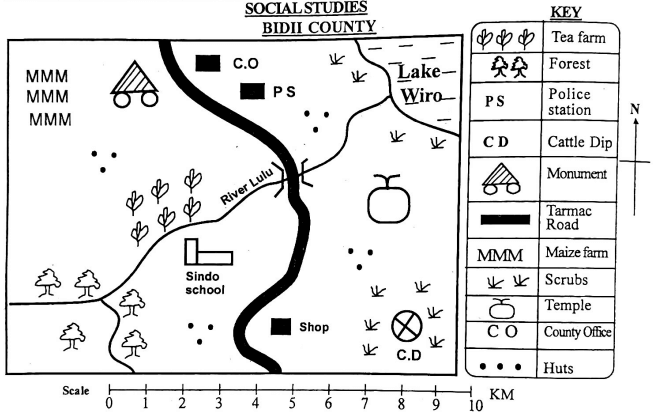
- River Lulu flows towards:-
- South West
- North East
- South East
- North West
- People in Bidii County are:-
- Christians
- Muslims
- Hindus
- Pagans
- The staple food for the people in BidiiCounty is:-
- maize
- tea
- cattle
- fish
- Which historic built environment is found in Bidii County?
- museum
- historical site
- monument
- temple
- Which economic activity is missing in Bidii County?
- crop farming
- livestock keeping
- trading
- fishing
- A low lying flat land is called:-
- plain
- hill
- plateau
- valley
- Which material is used to make the part marked Q in the traditional hut below?
- cement
- iron sheet
- mud
- grass
- A good leader should not be:-
- honest
- faithful
- corrupt
- hardworking
- There are ___________________________ counties in Kenya.
- 350
- 290
- 68
- 47
- Which one is an effect of child abuse?
- passing exams
- making new friends
- being healthy and happy
- running away from home
- People harvest crops during the ________________________ season.
- cold
- windy
- dry
- rainy
- ___________________________ is the total number of people living in an area.
- Habitat
- Cencus
- Community
- Population
- The exchange of goods for other goods is called:-
- goods trade
- currency trade
- bata trade
- barter trade
- Which colour in our national flag is at the bottom?
- Red
- Black
- Green
- White
- We should promote ________________________ in our school
- war
- conflict
- peace
- failure
- Digging of useful minerals from the ground is called:-
- tourism
- farming
- mining
- construction
- A proposed law is also called:-
- bill
- rule
- routine
- command
- Traffic lights have ______________________ colours.
- one
- two
- four
- three
- Who assists our County Governor in our county?
- Deputy speaker
- Deputy Governor
- Deputy Minister
- Member of County Assembly
- We take care of domestic animals by:-
- educating them
- underfeeding them
- overworking them
- providing shelter for them
CHRISTIAN ACTIVITIES
- God created all of us in His ________________________ and likeness.
- spirit
- image
- picture
- fear
- Balaam's _________________________ spoke to him.
- king
- donkey
- dog
- cow
- Zachariah and Elizabeth were the parents of:-
- John the Baptist
- Samuel
- Samson
- Moses
- There are ____________________ books in the Old Testament.
- 66
- 39
- 27
- 29
- Out of ten the lepers healed by Jesus, only ______________________ returned to thank him.
- nine
- three
- one
- ten
- Who was te wealthy tax collector who welcomed Jesus in his home?
- Zachary
- Zachariah
- Zadock
- Zacchaeus
- Why should children respect their mother and father? So that:-
- they may die early
- they may live long
- they can be saved
- they can avoid punishment
- Joseph was sold by his brothers to the land of:-
- Moab
- Canaan
- Judea
- Egypt
- Who was the first patriarch in the Bible?
- Abraham
- Adam
- Noah
- Moses
- Amnon raped his sister who was called:-
- Deborah
- Ruth
- Esther
- Tamar
ISLAMIC ACTIVITES
- Which surah in the holy Quran mentions slandering?
- Humazah
- Zilzallah
- Maun
- Inshirah
- The surah that is recited seventeen times in a day is the:-
- Fatiha
- Aadiyyat
- An-Nasr
- Lahab
- An uncle of the prophet (PBUH) was cursed by Allah (sw) because he was:-
- a munafik
- extravagant
- arrogant
- disobedient
- Which one of the following is not an obligatory prayer?
- Dhuha
- Asr
- Magharib
- Fitr
- The following are all haraam before Allah (sw). Which one is not?
- Gambling
- Begging
- Hoarding
- Mixing with other religions.
- Prophet Muhammad was born in the city of:-
- Makkah
- Madina
- Jerusalem
- Athrib
- The foster mother of prophet Muhammad was:-
- Kalima
- Halima
- Khadijah
- Maryamm
- Prophet Muhammad migrated from Mecca to:-
- Madina
- Hira
- Uhud
- Badr
- How many pillars of Imam are there in the holy Quran?
- seven
- six
- five
- four
- The pillar of Islam and also the pillar of the religion is called:-
- Swalah
- Hajj
- Saum
- Zakkat
MARKING SCHEME
CREATIVE ARTS
- A
- A
- C
- D
- B
- B
- B
- A
- A
- B
MUSIC
- A
- B
- D
- D
- A
- B
- A
- C
- A
- B
S/S
- B
- C
- A
- C
- D
- A
- D
- C
- D
- D
- C
- D
- D
- A
- C
- C
- A
- D
- B
- D
C.R.E
- B
- B
- A
- B
- C
- D
- B
- D
- B
- A
I.R.E
- A
- A
- D
- D
- D
- A
- B
- A
- B
- A
Integrated Science Questions and Answers - Grade 4 Mid Term 3 Exam 2023 Set 1
A. SCIENCE AND TECHNOLOGY
- The following are characteristics of animals except:-
- They grow
- They die
- They make their own food.
- They reproduce
- Identify the invertebrate below
- snail
- tick
- mosquito
- centipede
- Exhaust fumes from vehicles are likely to pollute ____________________ most.
- water
- crops
- air
- soil
- A thin long tube that connects the mouth and the stomach is called:-
- alimentary canal
- small intestine
- trachea
- oesophagus
- Which one is an odd one out?
- Salamander
- Turtle
- Frog
- Toad
- Name the safe gear below;
- pliers
- scissors
- tongs
- forceps
- A canine tooth is used for:-
- chewing food
- grinding food
- gripping food
- cutting food
- Which part of a computer is shown below?
- cable
- monitor
- keyboard
- Central Processing Unit
- Which one is NOT a transluscent material?
- skylight
- oiled paper
- mirror
- frosted glass
- Below is a diagram of a see-saw.
Part marked X is the:-- Fulcrum
- Load
- Effort
- Lever
- A flat plate made of metal floats on water because of its:-
- size
- mass
- shape
- material
- This animal breathes through:-
- nose
- gills
- spiracles
- tongue
- Which statement is NOT true about Nimbus clouds?
- They are dark grey in colour.
- They cover the whole sky.
- They indicate fine weather.
- They bring heavy rainfall.
- Absorption of water and salts in human beings takes place in the:-
- Large intestine
- Small intestine
- Stomach
- Mouth
- Sound travels in ________________________ directions.
- one
- same
- all
- low
- Which one is NOT a state of matter?
- Solids
- Gases
- Liquids
- Heat
- Which one is NOT a method of maintaing tools?
- store in a dry place
- wash them after use
- avoid using them
- sharpening the cutting tools
Use the diagram below to answer questions 18 - 19.

- Which digestive juice is produced at P?
- stomach juice
- saliva juice
- bile juice
- gastric juice
- The part marked Y is the:-
- Rectum
- Large intestines
- Anus
- Liver
- Which of the following digital devices cannot be used to take photographs of small insects?
- Tablets
- Camera
- Portfolio
- Computer
B. AGRICULTURE ACTIVITIES
- Decaying dead plants and animals in the soil farm:-
- gabbage
- sewage
- humus
- texture
- We can use water in the farm in all the following ways except:-
- mixing chemicals
- Swimming
- Irrigation
- Washing farm tools
- Which animal cannot be found in the soil?
- bat
- mole
- ant
- earthworm
- Pigs stay in a structure called:-
- shed
- sty
- hutch
- kennel
- Name the tool below;
- knife
- pliers
- handsaw
- spade
- Animals remove wastes inform of pellets. The animals are:-
- Goats
- horses
- dogs
- cattle
- Chicken kept for laying eggs are called:-
- broilers
- home birds
- layers
- capon
- Which one of the following is NOT a means of transporting water?
- using taps
- using pipes
- using tanks
- using tankers
- Which wild animal is shown below?
- mole
- monkey
- squirrel
- mongoose
- A farmer removed seedlings from one location to the other when he wants them to grow. This practice is called:-
- pruning
- shading.
- re-planting
- weeding
C. HOMESCIENCE ACTIVITIES
- Which of the following is a common illness in the locality?
- Anaemia
- Cholera
- Cancer
- Headache
- Which one is NOT good for our health?
- Eating a balanced diet.
- Sleeping the whole day.
- Having enough rest.
- Adequate sleep.
- Name the cleaning equipment below.
- Dustbin
- Mop
- Dustpan
- Bucket
- Shoes are made from the following materials except:-
- Nylon
- Leather
- Plastic
- Canvas
- Which fuel below pollutes the air most?
- Gas
- Charcoal
- Firewood
- Kerosene
- This food is rich in;-
- proteins
- vitamins
- carbohydrates
- minerals
- Which kitchen item is this?
- Colander
- Rolling pin
- Cutting board
- Tray
- Which one is not a source of milk?
- Milk vendor
- Milk shop
- From the cow
- From the farm
- Which needle work tool is drawn below?
- Thread
- Needle
- Thimble
- Cussion
- A person who buys things from a shop or market is called:-
- consumer
- seller
- trader
- service
C. PHYSICAL AND HEALTH EDUCATION
- What is teamwork?
- working hard.
- working together
- working alone
- not working together
- Grade four learners went to make an improvised ball. They don't need:-
- strings
- old socks
- wires
- polythene papers
- Which one of the following is not an equipment for the game of rounders?
- Rounders ball
- Rounders bat
- Rounders post
- Rounders helmet
- The diagram below shows an equipment used in rounders.
What is the name of the part marked H?- Knob
- Grip
- Barrel
- Seam
- Which ages can play ball size No. 3?
- 4 - 5 years
- 6-7 years
- 8 - 12 years
- Above 18 years
- Which game are the two girls playing?
- Handball
- Skipping
- Hand juggling
- Throwing
- What is the shape of an athlete track?
- Square
- Circular
- Triangular
- Oval
- The field of play in frisbee is divided into ,_______________________ courts.
- three
- two
- four
- one
- __________________________ pumps blood in our bodies during a warm-up activity.
- Heart
- Stomach
- Lungs
- Kidney
- Which item is NOT found in a First-Aidbox?
- Alcohol swabs
- Iodine
- Disposable latex gloves
- Steel wool
MARKING SCHEME
SCI/TECH
- C
- B
- C
- D
- B
- D
- C
- D
- C
- A
- C
- C
- C
- A
- C
- D
- C
- D
- A
- C
AGRI
- C
- B
- A
- B
- C
- A
- C
- A
- D
- C
H/SCI
- C
- B
- C
- A
- C
- B
- B
- D
- C
- A
PHE
- B
- C
- D
- C
- B
- C
- D
- A
- A
- D
Kiswahili Questions and Answers - Grade 4 Mid Term 3 Exam 2023 Set 1
Soma mazungumzo yafuatayo kisha ujibu maswali 1 hadi 5
Becky: ___1___ Tenzy.
Tenzy: Sijambo Becky.
Becky: Habari ___2___kwenu? Na wazazi wako? Mimi niko salama kwa neema ya mungu. Na unaelekea wapi?
Tenzy: Nimetumwa sokoni na nyanya kumnunulia ___3___vya jioni.
Becky: Mbona leo unaenda sokoni peke yako? Wakina Njeri na Pembo hawako? Je kwa familia yenu mko watoto ___4___
Tenzy: Ukianza hadithi ya watoto utaendelea kusoma kweli. Hizo ni maswali za upuzi na ujinga. Ongea na mimi mambo ya masomo ama swali inahusu watoto kama mimi na ___5___
Becky: Pole sana Tenzy kama nimekukosea!
| A | B | C | D | |
| 1. | Shikamoo | Hujambo | Alamsiki | Hatujambo |
| 2. | Za | ya | la | cha |
| 3. | Vyakula | viakula | Sokoni | Pesa |
| 4. | Mingapi | ngapi | vingapi | Wangapi |
| 5. | sisi | nyote | wewe | nami |
Soma kifungu kifuatacho kisha ujibu maswali 6 hadi 13
Hapo zamani za kale paliondokea marafiki wawili walipendana kama chanda na pete. Hawa wanyama walikua pundamilia na fisi. Walipendana na kufanya kazi zao zote pamoja. Wanyama hawa walifanana kwa rangi. Walikuwa na mchanganyiko wa nyeusi kwenye nyeupe.
Siku moja pundamilia alienda kutafutia watoto wake Vyakula akawacha watoto wake wawili wakilala.Kurudi pundamilia hakupata mtoto wake mmoja. Kuuliza, fisi,akajibu, alimwona akikimbia kuelekea mtoni. Ni kama alienda kuchota maji na atarudi tu.Fisi aliendelea tu kulala,kwenye "kitanda"chake.
Pundamilia alingoja mpaka jioni bila kuona mtoto wake.
- Pundamilia na fisi walikua
- Maadui
- Marafiki
- Majirani
- Wazazi
- Mtoto wa pundamilia alienda wapi?
- mtoni
- kucheza
- alikulwa na fisi
- alibebwa na maji
- Wingi wa neno “kitanda” ni
- kitanda
- vitanda
- Makitanda
- vitandani
- Pundamilia hula ___________________________
- Nyasi
- nyama
- wadudu
- Wanyama wengine
- Katikati ya wanyama hawa yupi alikuwa na watoto?
- pundamilia
- Fisi
- Farasi
- punda
- Rangi ya pundamilia ni
- nyekundu
- nyeusi
- samawati
- kijani
- Ni kweli kusema
- Fisi hukula nyama
- Fisi ni kubwa kama pundamilia
- Pundamilia anafanana na tembo kwa rang
- Pundamilia anataga mayai kubwa
- Kwa nini Pundamilia aliwacha watoto wake peke yao?
- Kutembea kiasi
- Kuinda wanyama wengine
- Kutafuta Vyakula
- Kuchota maji mtoni
Jaza pengo kutoka swali 14 hadi 18
Mwikali na Kanini ___14___. Magharibi ya mji ___15___ Kangundo. Wao ___16___ shule ya Msingi ya Mkengesia. Shule hiyo huwa ___17___ na kwao na huwabidi watumie pikipiki ili kufika shuleni. Wao huchukua ___18___ wa saa moja kufika huko.
| A | B | C | D | |
| 14. | wanaishi | waliishi | walikaa | huketi |
| 15. | wa | za | ya | la |
| 16. | husoma | husomwa | husomea | husomewa |
| 17. | bali | mbali | karibu | kuliko |
| 18. | mda | wakati | dakika | muda |
Kutoka swali 19 hadi 30, chagua jibu sahihi kulingana na maagizo uliyopewa.
- Neno "mwanafunzi” iko katika ngeli gani?
- LI - YA
- A - WA
- KI - VI
- U-I
Tambua neno lililopigiwa mstari
- Darasa letu ni safi kuliko lenu.
- Nomino
- kitenzi
- Kielezi
- Kivumishi
- Kinyume cha neno "simama" ni
- Inama
- Anguka
- Keti
- lala
- Nguo hili huvaliwa na ________________________
- Wasichana
- Babu
- Wavulana
- Mapacha
- Andika kwa wingi
Kichwa changu kina nywele.- Vichwa vyangu vina nywele
- Kichwa changu kina nywele
- Vichwa vyetu vina manywele
- Vichwa vyetu vina nywele
- Umbo hili ni _____________________________________
- Duara dufu
- Mraba
- Duara mche
- Duara
- Robo tatu kwa nambari ni _____________________________
- 4/3
- 2/4
- 3/4
- 3/3
- Paka yuko ____________________________ meza.
- kando ya
- juu ya
- ndani ya
- chini ya
Kanusha sentensi hii
- Kazungu alioga jana
- Kazungu alioga juzi
- Kazungu alioga juzi
- Kazungu hajaoga jana
- Kazungu hajaoga jana
Kamilisha methali
- Mtoto wa ___________________________ ni nyoka
- kiluilui
- mayai
- nyoka
- sumu
- ____________________________ hutumia dira
- Mseremala
- Mwalimu
- Rubani
- Mkulima
- Mwala ni mfupi kama
- meza
- ndovu
- mlingoti
- nyundo
MARKING SCHEME
- B
- A
- A
- D
- C
- B
- C
- B
- A
- A
- B
- A
- C
- A
- C
- A
- B
- D
- B
- C
- C
- A
- D
- A
- C
- D
- Kazungu hakuoga jana
- C
- C
- D
English Questions and Answers - Grade 4 Mid Term 3 Exam 2023 Set 1
Read the conversation below and then answer questions 1-5.
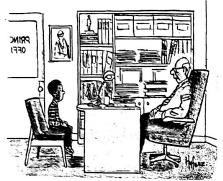
Alex: Hallow Mr. Ateku! May I come in?
Mr Ateku: Come in young boy. Oh! Alex sit down.
Alex: Excuse me sir, I am a new learner in this school from Njiru primary school.
Mr Ateku: Welcome our school you are not a new learner now, I can still remember your name.
Alex: Teacher I have a problem. In my new class learners like talking in their mother tougue. But what is strange to me is that our classmates beg your food by force. You give them and remain with nothing.
Mr.Ateku: That is not allowed here. who is your classteacher?
Alex: I don't know by name but by appearance. When I reported the matter to her,she just laughed and promised to stop but in vain.
Mr. Ateku: Oh! My God! What a good boy. Come with me to your class. They will Know that such behaviours are not allowed here.
Alex: Thank you teacher
Mr. Ateku: Welcome!
- Who is Mr. Ateku according to the above conversation?
- Teacher on duty
- Headteacher
- Class teacher
- Class prefect
- It is true to say that Alex is
- An old learner at Njiru primary
- One of the teachers
- A new learner in Njiru Primary
- A new learner from Njiru Primary
- How many accusations did Alex present to Mr. Ateku
- Two
- Three
- Four
- One
- Which place did Mr. Ateku meet Alex?
- In grade four class room
- At the school gate
- At the assembly ground
- In Mr Aleku's office
- Which polite word did Mr Ateku say to Atex at the end of the conversation?
- Thank you!
- Oh!
- Welcome!
- Excuse me!
Read the passage below and then answer questions 6-9
Nzula had never been to the village for along time. He had never gone there since his parents came to the city when he was only seven years. He enjoyed going to the parks, watching movies and eating very delicious foods in hotels in the city centres,during
the weekends.
He imagined how life in the village would be. Some of his friends had told him that life in the rural areas was enjoyable because were alot of space to play and graze goats. Food was also "plenty" and all you had to do was to go to the farm dig or pick what youn want to eat.
During chrismas holiday, his parents told him that they would go to the village to visit his Uncle. Nzula was very exited but anxious. That morning, they woke up very early
and set off for the journey to the village.
- Who told Nzula that life in the village was enjoyable?
- His parents
- His Uncle
- His friends
- His teachers
- Nzula ate delicious foods from the hotel. The others from the hotel can be
- Resturant
- City centre
- Parks
- Bars
- What is the opposite of the word Uncle as used in the passage?
- Parents
- grand parent
- Aunt
- cousin
- Nzula would all the following during the weekend except.
- go to the parks
- go to the farms
- Watch movies
- eat in hotel
Read the passage below and then answer questions 10-13
More than a half a million people die of malaria in kenya every year. The most affected people are the children below five years. This disease is spread by a female mosquito called anopheles. When the insects bite the children, they have fever,weak joints and sweating at night. This disease kills very fast if not urgently treated in children. People are therefore asked to sleep under mosquito nets, remove stagnant water around their homes.
- The mosquito that spread malaria has _______________________ legs.
- four
- Six
- eight
- two
- What is a half a million in symbols?
- 5000
- 50 000
- 500 000
- 5 000 000
- Which statement also mean high temprature?
- Sweating
- Weakull
- Joint
- Fever
- Which one is the most effective method of controlling malaria?
- Going to the hospital
- Taking malaria medicine
- Removing stagnant water around homes
- Sleeping under mosquito nets
Fill in the blank spaces in numbers 14-18
We have read stories in our newspapers ___14___ accidents which happen ___15___ our roads everyday. These accidents involve motorists, cyclists and ___16___. It is the responsibility of every road user to be ___17___ when using the ___18___.
| A | B | C | D | |
| 14. | For | on | for | about |
| 15. | in | on | at | besides |
| 16. | pedestrians | walkers | footers | Animals |
| 17. | rude | fast | careful | carefull |
| 18. | rod | raod | rode | road |
For questions 19-30, answer according to the instructions.
- Mary come to school late ________________________ she woke up late.
- because
- but
- through
- even
- During the festival, our school choir sang ___________________________
- mercilly
- merry
- merrily
- marrily
- How __________________________ sugar do you need for the tea?
- little
- many
- least
- much
- The table is ________________________ heavy for Grace to carry.
- very
- so
- much
- too
- I belive in my pet. It is _________________________
- mine
- me
- myne
- Yours
- Our English teacher is fond ____________________________ making jokes to us.
- with
- for
- of
- at
- Which word is correctly spelt?
- Address
- beauty
- Calenda
- Suny
- Param is the __________________________ boy in our class.
- Smaller
- most smallest
- Smallest
- Most small
- Atieno had ___________________________ when the electricity went off.
- eaten
- at
- eatten
- Eating
- All the girls in our class came to school ____________________________ school van.
- With
- on
- for
- by
- The doctor has spent ___________________________ hour with the patient.
- Few
- an
- a
- the
- Use the plural form of the underlined word to complete the sentence.
All the mouse ran away on seeing our new cat.- mise
- mmices
- mouses
- mice
COMPOSITION
Write an interesting composition about;
MY FIRST JOURNEY BY TRAIN:
MARKING SCHEME
- B
- D
- A
- D
- C
- C
- A
- C
- B
- B
- C
- D
- C
- D
- B
- A
- C
- D
- A
- C
- D
- D
- A
- C
- A
- C
- A
- D
- B
- D
Mathematics Questions and Answers - Grade 4 Mid Term 3 Exam 2023 Set 1
- The number of pupils at Karapul Primary school is three thousand four hundred and nineteen. What is this number in symbols?
- 30419
- 3419
- 34019
- 3491
- A farmer has 1256 goats and 729 sheep in his farm. How many animals does he have altogether?
- 1885
- 1985
- 1986
- 1886
- What is the next number in the sequence below?
6, 12, 18, 24, _____________-- 28
- 32
- 30
- 36
- Subtract 2343 from 7564?
- 5021
- 5221
- 5120
- 4221
- Round off 398 to the nearest tens.
- 400
- 390
- 300
- 3980
- What fraction is unshaded?
- 1/3
- 1/4
- 3/4
- 2/3
- Work out:-
46
x 24
____- 1104
- 1004
- 964
- 1204
- Write ix in Hindu/Arabic numerals.
- 11
- 7
- 9
- 8
- What is the place value of digit 7 in the number 8795?
- tens
- hundreds
- thousands
- 700
- Write 7/5 as a mixed number.
- 12/5
- 21/5
- 15/7
- 12/7
- Use a ruler to measure the line AB below.
- 10cm
- 11cm
- 8cm
- 9cm
- The diagram below shows Peter's maize farm.
What is its perimeter?- 38m
- 40m
- 48m
- 28m
- A rope measures 8m long. What is the length of the rope in centimetres?
- 8000cm
- 800cm
- 80cm
- 8cm
- How many small boxes are used to make the stack below?
- 10
- 36
- 18
- 24
- Lydia bought 16 tins of blue band. If each tin was 1/2kg. How many kilograms of blue band did she buy?
- 4kg
- 8kg
- 16kg
- 32kg
- Identify the angle below.
- Right angle
- Reflex abgle
- Acute angle
- Obtuse angle
- Work out:
weeks days
8 1
− 2 6
_______________- 6weeks 5days
- 5weeks 2days
- 5 weeks 5days
- 6weeks 2days
- Atieno slept for 4 hours 20 minutes. How many minutes did she sleep?
- 420 minutes
- 260 minutes
- 240 minutes
- 200 minutes
- Which one is a need?
- Moses bought a packet of maize flour for sh. 230. He paid with sh. 500 note. How much balance did he get?
- sh. 230
- sh. 370
- sh. 270
- sh. 170
- Kolo had 9698 bags of maize in his stores. He sold 3324 bags of maize. How many bags remained in the store?
- 6384
- 5374
- 6374
- 5384
- Add all the multiples of 4 between 30 and 39.
- 66
- 67
- 68
- 65
- Which shape below is an oval?
- Which one is NOT a factor of 30?
- 3
- 5
- 6
- 7
- Find the missing number.
14 ×= 84
- 5
- 7
- 6
- 70
- Write 74/100 as a decimal.
- 0.74
- 74.00
- 7.4
- 0.074
- What is the perimeter of the shape below?
- 126cm
- 84cm
- 42cm
- 168cm
- How many points of intersections are there in the figure below?
- 3
- 4
- 5
- 2
- Work out: 5b + 3c + b = _____________________
A. 4b + 3c
B. 4b - 3c
C. 3b + 3c
D. 6b + 3c - The chart below shows vehicles which passed near Masumbi Primary School.
How many vehicles passed near the school?Vehicles Tally marks Number Cars //// /// Vans //// / Lorries //// Buses // Motorbikes //// //// //// // - 32
- 28
- 42
- 38
MARKING SCHEME
- B
- B
- C
- B
- A
- C
- A
- C
- B
- A
- D
- A
- B
- D
- B
- A
- B
- B
- C
- C
- C
- C
- A
- A
- C
- A
- D
- B
- D
- D


